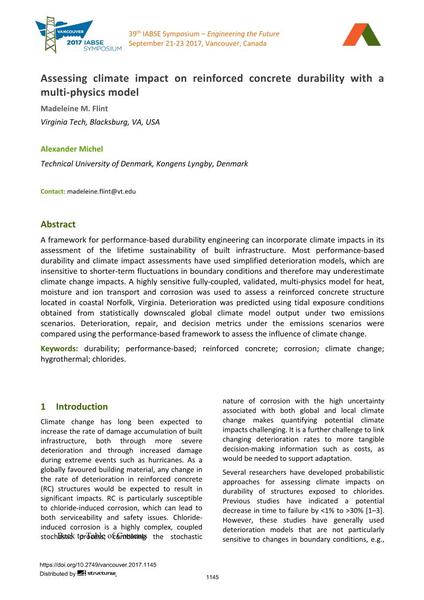Assessing climate impact on reinforced concrete durability with a multi-physics model

|
|
|||||||||||
Détails bibliographiques
| Auteur(s): |
Madeleine M. Flint
(Virginia Tech, Blacksburg, VA, USA)
Alexander Michel (Technical University of Denmark, Kongens Lyngby, Denmark) |
||||
|---|---|---|---|---|---|
| Médium: | papier de conférence | ||||
| Langue(s): | anglais | ||||
| Conférence: | IABSE Symposium: Engineering the Future, Vancouver, Canada, 21-23 September 2017 | ||||
| Publié dans: | IABSE Symposium Vancouver 2017 | ||||
|
|||||
| Page(s): | 1145-1152 | ||||
| Nombre total de pages (du PDF): | 8 | ||||
| Année: | 2017 | ||||
| DOI: | 10.2749/vancouver.2017.1145 | ||||
| Abstrait: |
A framework for performance-based durability engineering can incorporate climate impacts in its assessment of the lifetime sustainability of built infrastructure. Most performance-based durability and climate impact assessments have used simplified deterioration models, which are insensitive to shorter-term fluctuations in boundary conditions and therefore may underestimate climate change impacts. A highly sensitive fully-coupled, validated, multi-physics model for heat, moisture and ion transport and corrosion was used to assess a reinforced concrete structure located in coastal Norfolk, Virginia. Deterioration was predicted using tidal exposure conditions obtained from statistically downscaled global climate model output under two emissions scenarios. Deterioration, repair, and decision metrics under the emissions scenarios were compared using the performance-based framework to assess the influence of climate change. |
||||
